This week’s post is a coda to my post from a few weeks ago about the artist Berthe Morisot, the stalwart Impressionist who’s finally getting her due.
When Berthe Morisot died of pneumonia, at 54, she left behind her one child, Julie Manet, still a teenager.
At sixteen, Julie was now an orphan: her father, Eugene Manet, had died four years before, in 1891. And Julie’s uncle, Edouard Manet, had died in 1883. Though she had other aunts and uncles and cousins, Julie had no siblings. (Berthe Morisot had vowed as a young woman never to marry, and instead to devote herself to her art. She gave in to marriage at 33, marrying Eugene Manet, Edouard’s younger brother. Eugene was a painter too, but not of the groundbreaking, father-of-modern-art-level of his older brother. Eugene pledged to always support Morisot’s artistic work. Four years later, their daughter Julie was born.)
Morisot recorded Julie’s childhood in some of her most vivid paintings. In all, she painted 150 pictures of Julie.
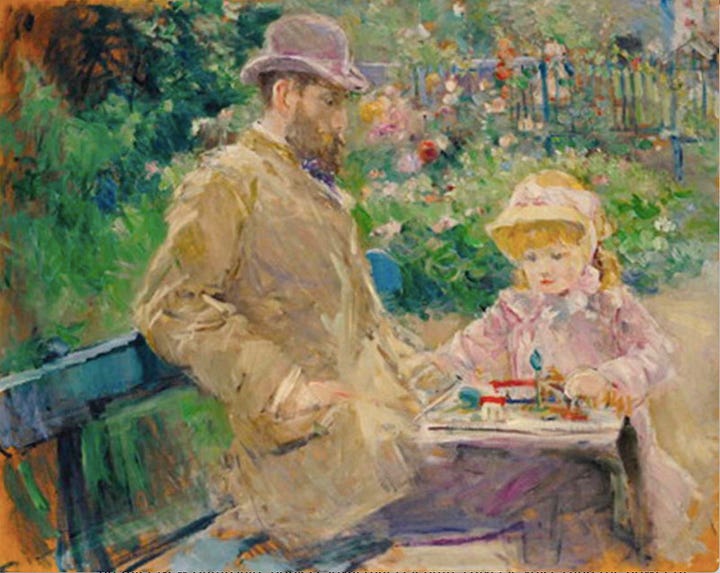
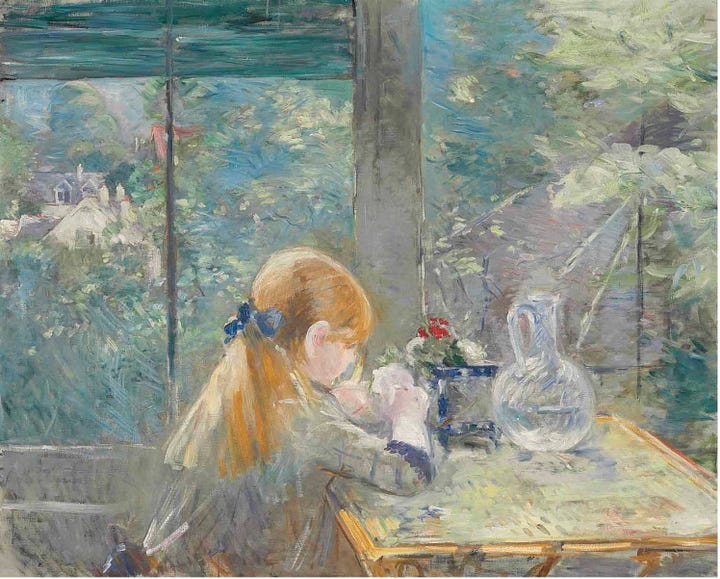
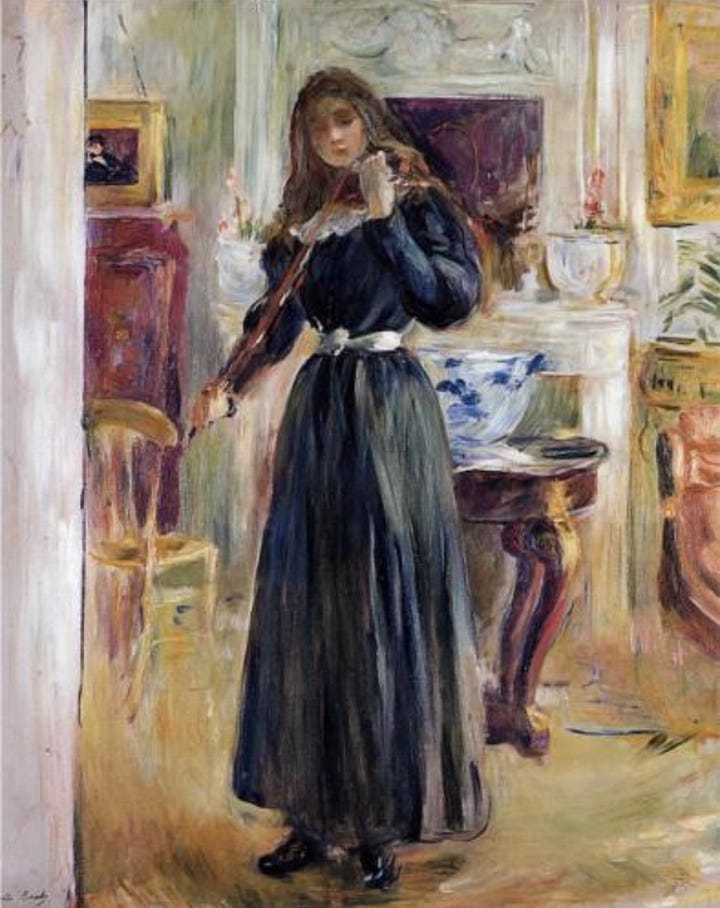
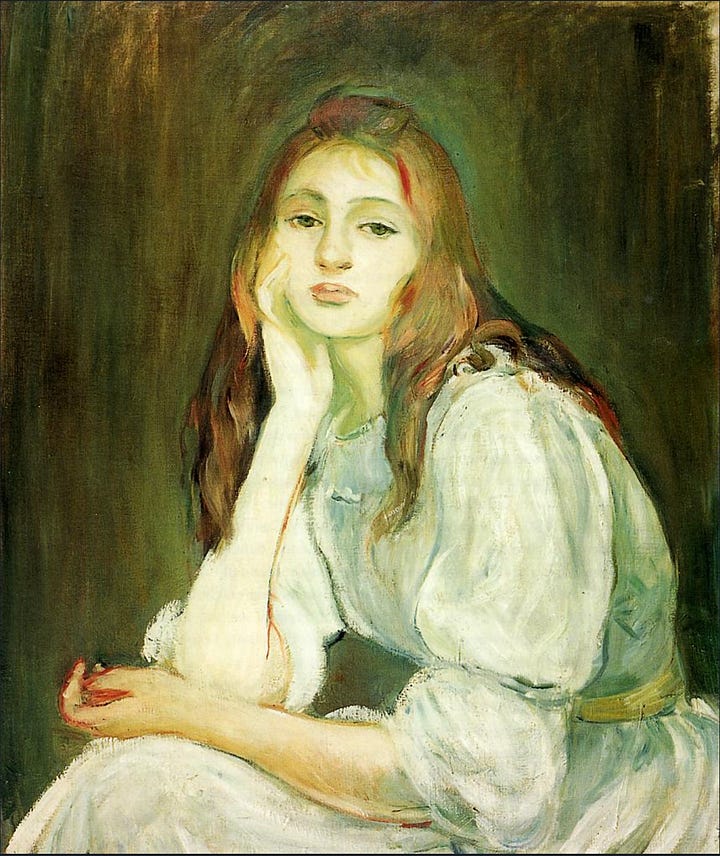
And here’s Renoir’s portrait of a nine-year-old Julie, below. Morisot called the style that Renoir was working in at this time his “Ingresque period,” with a more finished, less Impressionistic surface. As Julie Manet later recalled, “I thought it was a good resemblance, but when Degas saw it he complained: "by doing round faces, Renoir produces flower pots".
Julie knew the Impressionists from her mother’s salons and dinner parties, and from annual their group shows. As child and teen, she would have heard them talking about one another’s work, their changing styles, their struggles and frustrations.
After Morisot died, some of those Impressionists, especially Pierre-Auguste Renoir and Edgar Degas, served as unofficial guardians for Julie. The poet Stephane Mallarmé, close friend of Morisot and other Impressionists, was Julie’s official guardian.
In those first years after her mother’s death, Julie lived with her orphaned cousins, Paule and Jeannine Gobillard, the daughters of Morisot’s older sister; Julie and Jeannine kept up their painting practice, copying Old Masters at the Louvre. Degas arranged for Julie to meet his student Ernest Rouart at the Louvre, setting up Julie with her future husband, a young artist from a family of artists and art collectors. It’s a meeting that echoes another meeting from decades before: Morisot and her sister, copying Old Masters at the Louvre, first met the Manet brothers there, although I imagine Morisot as bolder than Julie: no matchmaker involved.

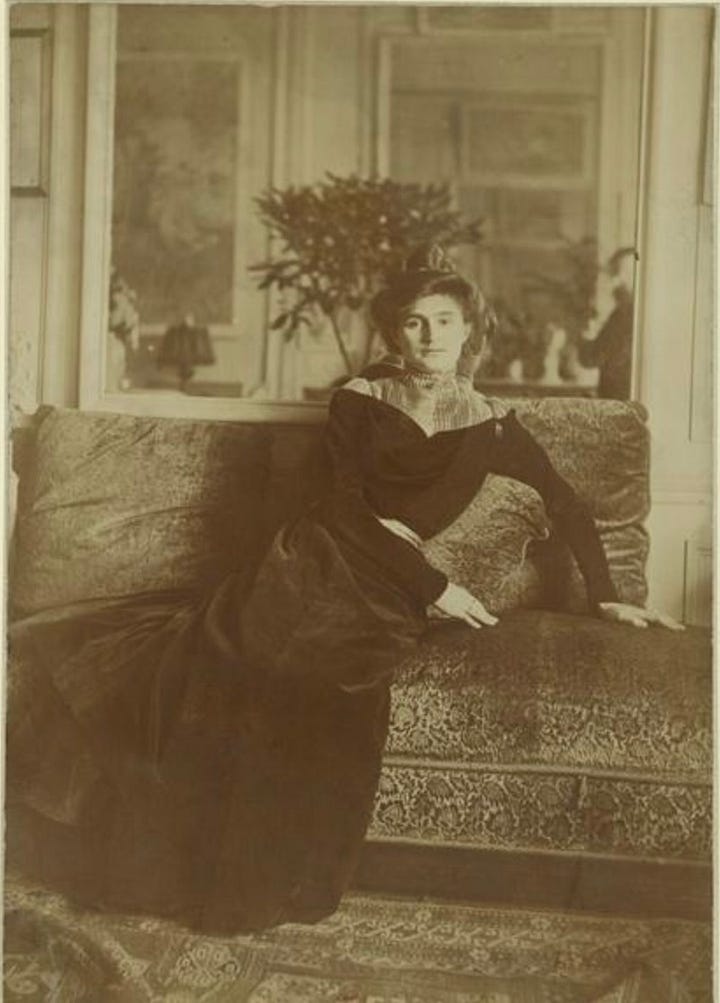
Around this time, Degas was experimenting with photography, and he made pictures of Julie and her cousins. In both these pictures, you can see Degas reflected in the mirror. I always thought of Degas as an anti-social crab, but it turns out he was also a caretaker and a matchmaker.
Julie had pictures accepted at the Salon des Refusés, but she married Ernest rather quickly, at 22 (in a double wedding ceremony with her cousin Jeanine). And soon after that, she had the first of her three sons, and she stopped exhibiting. So Julie didn’t follow her mother’s lead in putting art first, marriage second, but then again, her mother wasn’t orphaned as a teen. And maybe Morisot’s example was simply too much, her shadow too long…
Here are three of Julie’s paintings—you can see Renoir’s influence in the picture of the woman in red, Julie’s cousin. And the fourth picture, the woman writing, is Julie. It’s painted by her husband Ernest.
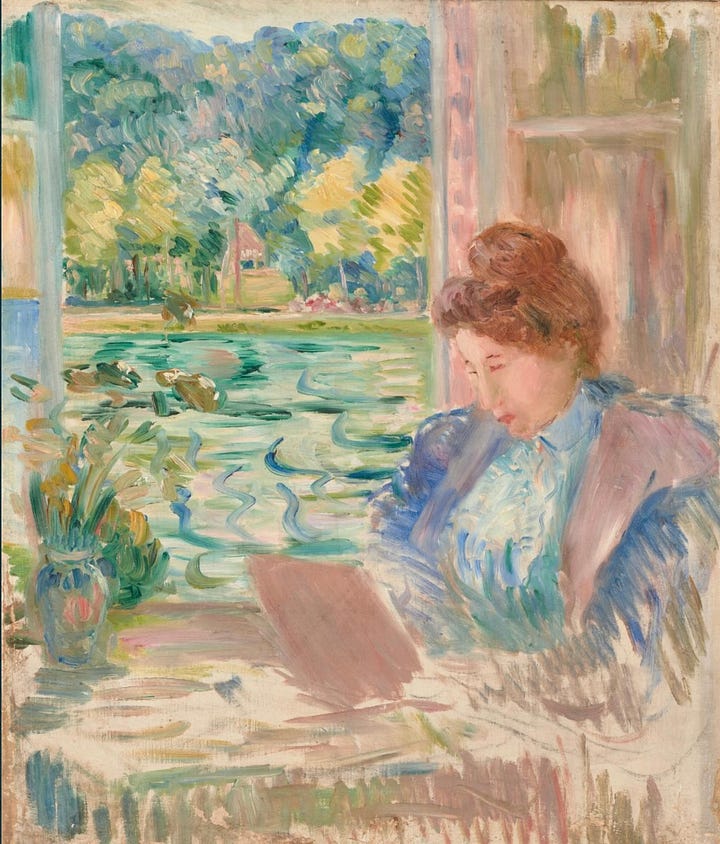


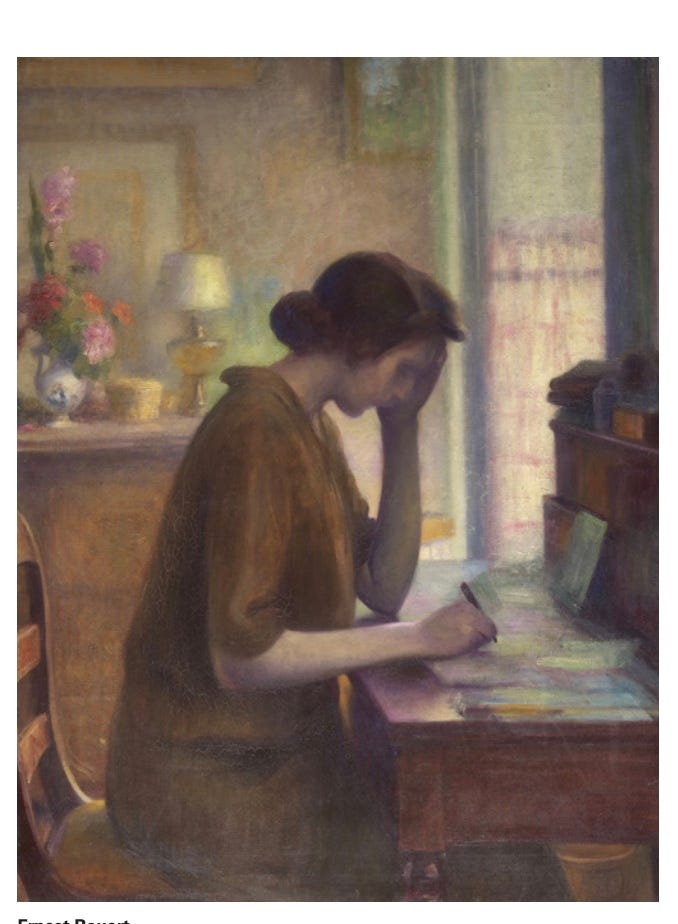
Julie Manet’s life work turned out to be a mix. Yes, there was art—she continued to draw and paint, though not to exhibit, and she and Ernest continued to collect art. But there was also motherhood, the Catholic faith that she and Ernest took up later in life, and the work of keeping her mother’s legacy alive. That work began when Julie was 17 or 18, the year after Morisot died, when she catalogued 400 pieces of her mother’s work for a posthumous exhibit that the Impressionists arranged. Decades later, near the end of her own long life, Julie saw the catalogue raisonne of Morisot’s work finally published, in 1961.
Thank you for joining me on this trip down the Morisot-Manet rabbit hole!
Further reading:
Catalogue copy from Musee Marmottan’s exhibit on Julie Manet’s life, 2021-2022.
I love this brief essay by Summer Brennan, Berthe Morisot’s Last Letter, about Morisot’s last letter to Julie.
A curatorial talk about Morisot’s Julie Playing the Violin, Montreal Museum of Fine Arts.
Growing Up with the Impressionists: the Diary of Julie Manet (I have only read snippets because the book is $300).
I’ll leave you with this view of Otto, posing in the middle of our hill the other day.





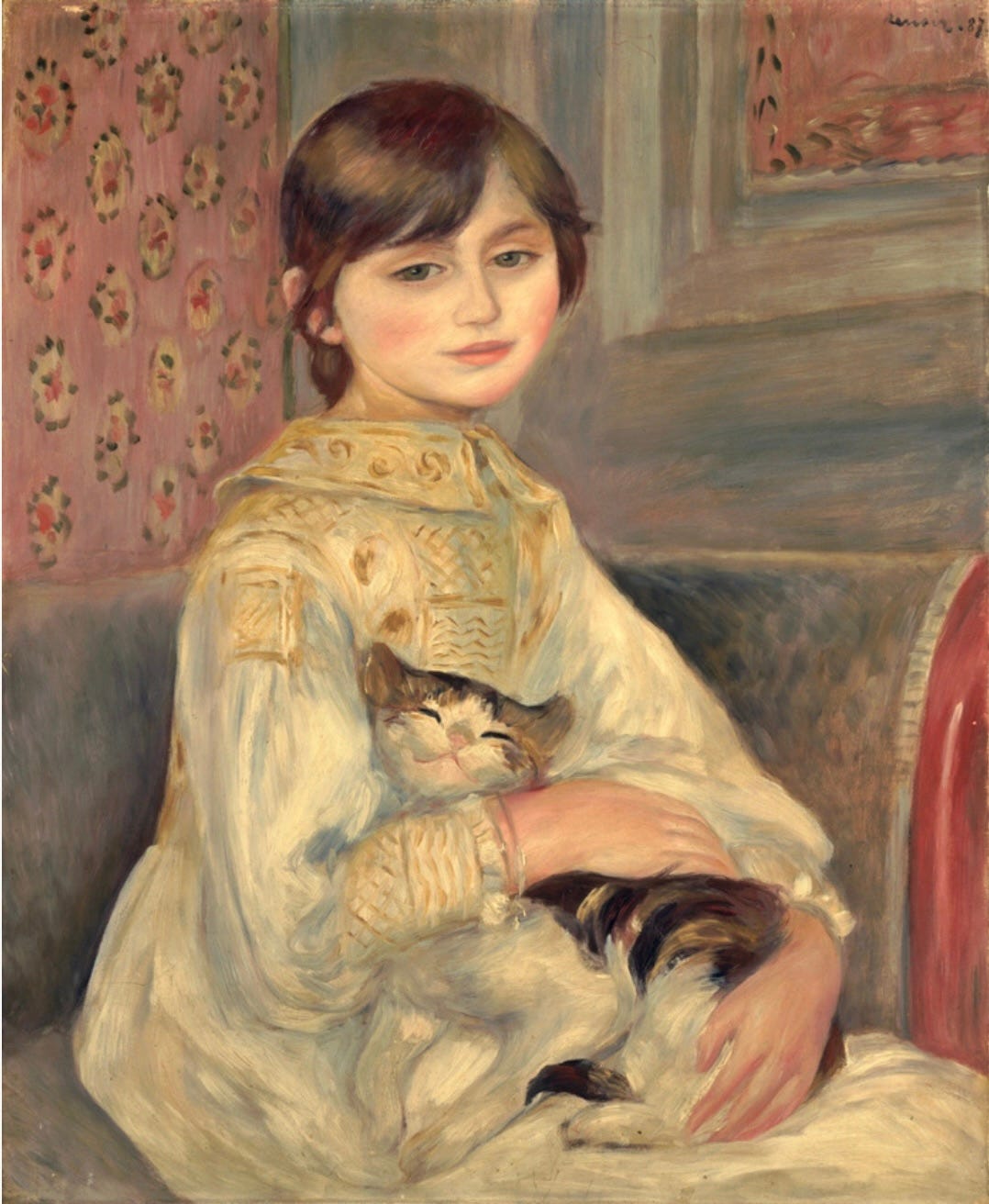

So interesting! Beautiful paintings...
What a delight to learn about Morisot's daughter Julie. I had no idea she had been a painter, too. Or that her mother's paintings included her daughter in so many of my favorite paintings.